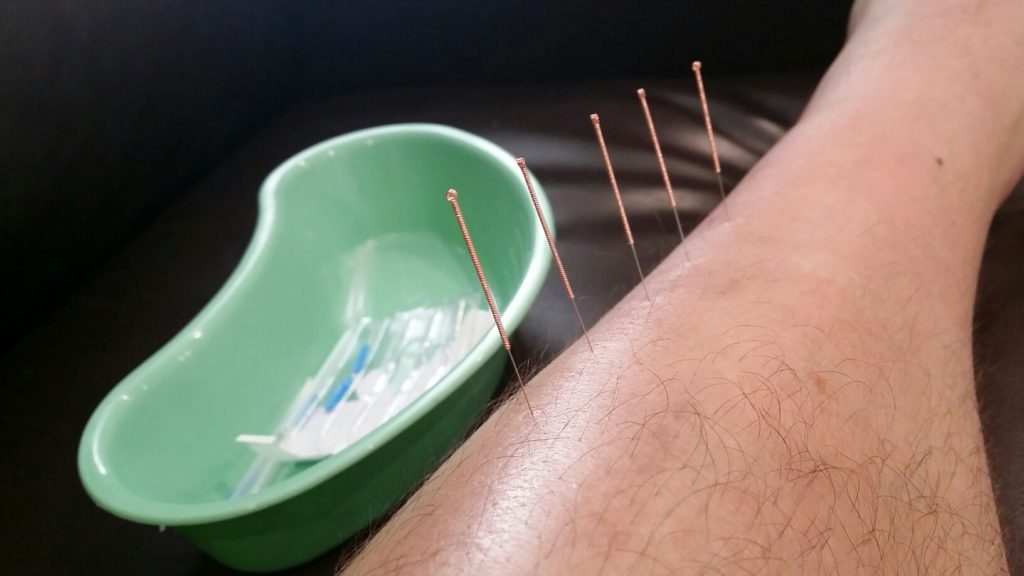Dry needling is an effective technique for the treatment of muscular pain by relaxing overactive muscles.
What is Dry Needling?
The practice of ‘dry needling’ involves inserting an acupuncture needle into a trigger point and is typically used to treat the pain associated with injuries or muscular pain. A trigger point is a tender spot in a tight band of muscle which causes pain.
Is Dry Needling similar to acupuncture?
There are many similarities and differences between dry needling and acupuncture. Dry needling is strictly based on Western medicine principles and research and it is increasingly used in the management of musculoskeletal and sports injuries.
How does Dry Needling work?
There are mechanical and biochemical effects. We know that inserting a needle into trigger points can cause favourable biochemical changes, which assist in reducing muscular tension and pain. This in turn may improve joint and muscular function.
What type of problems can be treated with Dry Needling?
Dry needling can be used for a variety of musculoskeletal problems. Such conditions include, but are not limited to:
- Headaches (tension-type headaches, jaw pain)
- Neck and back pain
- Shoulder pain (rotator cuff pathology)
- Arm pain (tennis elbow, carpal tunnel syndrome, golfer’s elbow)
- Buttock, groin, hip and leg pain (sciatica, hamstrings strains, calf tightness/spasms)
- Knee pain (osteoarthritis, patella tendon pathology)
Is the procedure painful?
The needles used for dry needling are so fine that most patients do not feel the insertion of the needle. At times a dull ache may be felt in the muscle being treated or into its referral area, which is a desirable reaction. If deemed therapeutic, a local twitch response may be elicited; a very brief (less than a second) painful response. Some patients describe this as a little electrical shock or a cramping sensation.
Are the needles sterile?
Yes, we only use sterile disposable needles.
What side effects can I expect after the treatment?
Similar to other physiotherapy treatment techniques, mild soreness is common after the procedure. The soreness is described as muscle soreness over the area treated and into the areas of referred symptoms. Typically, the soreness lasts between a few hours and two days.
I am not comfortable with needles. Do I have to have Dry Needling?
No. Dry needling does not replace the usual physiotherapy techniques and procedures, it simply is another tool available to help reduce pain symptoms. Before any procedure you are always informed and your consent is mandatory.
For further information on Dry Needling or to book an appointment Contact Us.























